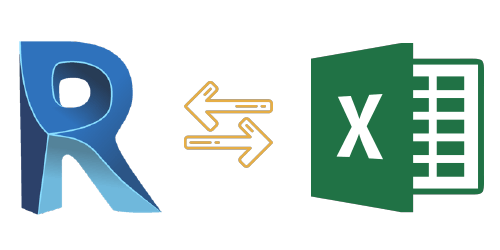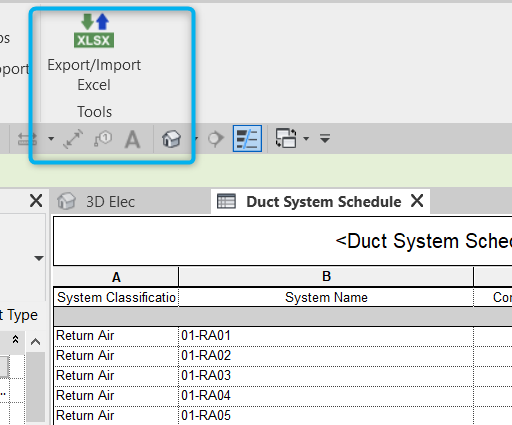Revit Tools: Your Secret to Precision and Efficiency
Wiki Article
Revit Accelerator: Excel Integration Approaches for Enhancing Performance and Cooperation
In this article, we will explore the advantages of integrating Excel right into your Revit operations. Plus, we will certainly share ideal methods for flawlessly integrating Excel right into your Revit projects. Obtain all set to supercharge your Revit experience with our Revit Accelerator: Excel Assimilation Strategies!Advantages of Excel Integration in Revit
The advantages of Excel integration in Revit are many and can significantly enhance productivity and cooperation. By seamlessly attaching these two effective devices, you can simplify your process and save beneficial time. With Excel combination, you can easily import and export information in between Revit and Excel, allowing you to leverage the toughness of both programs.
Another advantage of Excel integration is the capacity to create vibrant timetables and reports. By linking your Revit design to an Excel spreadsheet, any modifications made in Revit will immediately update in the corresponding Excel documents. This makes it very easy to generate up-to-date timetables, amount departures, and various other task documents.
Excel integration in Revit likewise allows far better cooperation amongst staff member. With the capability to import and export information, you can conveniently share information with colleagues that might not have accessibility to Revit. This advertises reliable interaction and enables for better coordination and decision-making.
Improving Operations With Revit and Excel
Streamlining operations with Revit and Excel can considerably improve effectiveness and collaboration. By incorporating these two effective tools, you can maximize your design process and improve interaction within your team. With Revit, you can produce 3D models and produce thorough architectural and engineering documents. When it comes to information monitoring and evaluation, Excel is the best software. By combining the abilities of Revit and Excel, you can perfectly move data in between the two applications, getting rid of the requirement for manual information entrance and decreasing the risk of errors.
Utilizing Revit and Excel with each other enables you to take advantage of the staminas of each program - import excel into revit. You can export information from Revit right into Excel, where you can do intricate computations, create charts and graphes, and assess the information in an extra organized and effective fashion. On the various other hand, you can import data from Excel into Revit, allowing you to promptly upgrade your models and documents based upon modifications made in Excel
The assimilation of Revit and Excel likewise promotes cooperation amongst staff member. By sharing Excel files, you can conveniently work together and connect on style and construction-related data. This boosts sychronisation and ensures that every person is functioning with the most up-to-date info.
Making Best Use Of Collaboration With Excel and Revit
To make best use of partnership with Excel and Revit, you can perfectly share and upgrade layout and construction-related information with your group. With simply a couple of clicks, you can import Excel spreadsheets right into your Revit model, allowing you to conveniently gain access to and adjust the information.One of the key benefits of using Master conjunction with Revit is the capability to update information in both programs concurrently. Any type of modifications made in Excel will immediately be reflected in Revit, and vice versa. This makes sure that everybody is dealing with one of the most updated information, preventing complication and conserving beneficial time.
Furthermore, Excel supplies powerful tools for analyzing and organizing information, which can significantly boost your collaboration initiatives. You can produce custom-made reports and graphes in Excel, helping you to imagine and connect essential task details effectively. This can be especially valuable when providing data to stakeholders or making informed decisions based on job metrics.
Advanced Techniques for Enhancing Performance in Revit Using Excel
By making use of sophisticated techniques in Revit, you can substantially increase your productivity by leveraging the power of Excel. With Revit's Excel combination feature, you can connect Excel spread sheets directly to your Revit design, allowing you to easily take care of and update data.
Furthermore, you can utilize Excel macros to automate repeated jobs in Revit (revit tool). Macros allow you to tape a series of actions and play them back with a single click, saving you effort and time. You can develop a macro to instantly create space schedules or update parameter values in bulk.
Finest Practices for Excel Assimilation in Revit
Using Excel as a data management tool in Revit permits effective management and upgrading import excel into revit of data. By incorporating Excel right into your Revit workflow, you can improve your procedures and enhance efficiency. One of the very best methods for Excel integration in Revit is to create a clear and organized information framework. This indicates creating your Excel spreadsheets with columns and rows that straighten with the parameters and classifications in your Revit job. By doing so, you can easily import and export information between Revit and Excel without any confusion. Another finest method is to use formulas and features in Excel to automate estimations and data adjustment. This can save you time and make certain precision in your data administration. Furthermore, it is essential to frequently update your Excel spreadsheets and sync them with your Revit project. This means, any kind of adjustments made in Revit will be reflected in your Excel documents, and vice versa. By complying with these ideal practices, you can efficiently utilize Excel as a data monitoring tool in Revit and increase your productivity and collaboration.Final Thought
In verdict, incorporating Excel with Revit can greatly enhance efficiency and cooperation in the layout procedure. By leveraging the power of Excel, Revit individuals can achieve greater degrees of efficiency and cooperation in their jobs.With Excel combination, you can easily import and export information between Revit and Excel, allowing you to utilize the toughness of both programs.
One of the crucial advantages of Excel integration is the capability to utilize Excel solutions and functions within Revit. By connecting your Revit design to an Excel spread sheet, any kind of modifications made in Revit will instantly update in the matching Excel data. On the various other hand, you can import information from Excel right into Revit, allowing you to quickly upgrade your designs and documents based on changes made in Excel.
With Revit's Excel combination attribute, you can link Excel spreadsheets straight to your Revit design, allowing you to quickly handle and upgrade information.
Report this wiki page